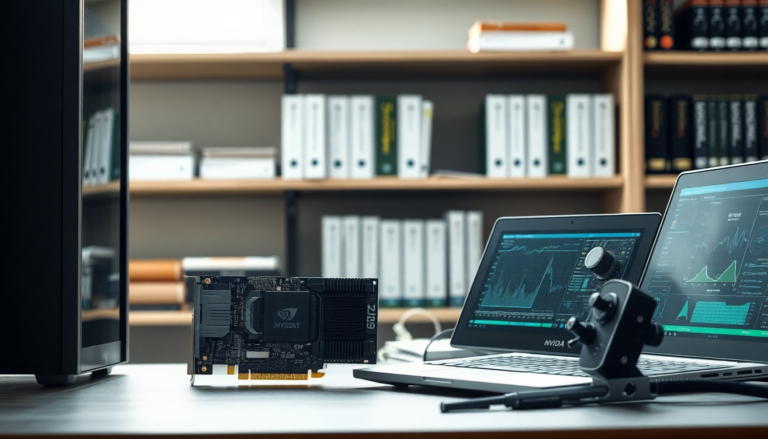Argomenti trattati
The recent discovery of the GPUHammer attack has sent shockwaves through the tech community, raising serious concerns about the integrity of artificial intelligence (AI) models. This vulnerability specifically targets NVIDIA GPUs, manipulating their memory to disrupt AI performance without needing direct access to the underlying code or data. As AI systems become more integral to various sectors, understanding and mitigating such risks is crucial. How can we protect our systems from these emerging threats?
What is GPUHammer and How Does It Work?
Researchers from the University of Toronto have unveiled the GPUHammer attack, which reveals just how devastating a single bit flip in GPU memory can be. This seemingly minor glitch can plummet an AI model’s accuracy from a promising 80% to shockingly low levels. But this isn’t just a theoretical risk; it has been executed on real hardware, particularly the NVIDIA RTX A6000. The technique involves repeatedly accessing memory cells in a way that causes adjacent bits to flip, leading to significant data corruption.
Interestingly, similar vulnerabilities, known as Rowhammer attacks, have historically been associated with CPU and RAM configurations. The principle behind these attacks hinges on electrical interference from closely packed memory cells. As modern memory chips have evolved, the risk of bit flips has expanded into the realm of GDDR6 VRAM, which is commonly used in today’s NVIDIA graphics cards. This shift underscores the necessity for vigilance, particularly in both consumer and enterprise environments where AI workloads are at stake.
Implications and Risks of GPUHammer
One of the most concerning aspects of GPUHammer is its ability to operate without direct access to a user’s data. Imagine attackers exploiting shared GPU resources in cloud environments; they could disrupt workloads without ever being detected. Researchers have illustrated that even with preventative measures in place, multiple bit flips can occur across various memory banks, completely compromising trained AI models. This raises the question: what happens when our critical systems are at risk?
The implications of such an attack are far-reaching, especially in regulated industries like healthcare, finance, and autonomous driving. These sectors depend heavily on precise AI decision-making, and any breach in data integrity could result in catastrophic outcomes—think incorrect decisions, security vulnerabilities, and even legal ramifications. As AI technology continues to permeate various applications, the need for robust memory safety protocols on GPUs has never been more urgent.
Mitigating the Threat: Recommendations for Users
In light of the GPUHammer threat, NVIDIA has recommended that users enable Error Correction Code (ECC) where supported. ECC is a crucial feature that introduces redundancy to memory systems, allowing them to detect and correct errors like bit flips. While enabling ECC might result in a slight performance trade-off—around 10% slower processing for machine learning tasks—it serves as an essential safeguard for those engaged in serious AI work.
For users operating in shared environments, such as cloud gaming servers or AI training clusters, the risks posed by GPUHammer are particularly relevant. By implementing ECC, users can help ensure the integrity of their workloads and protect their systems against potential disruptions. Although home users may not be the primary targets of such attacks, the broader implications for shared GPU usage highlight the necessity for vigilance across the industry. Are we doing enough to protect our data?
The Future of AI Security in GPU Environments
As the world of artificial intelligence continues to evolve, our strategies for securing it must adapt as well. The emergence of vulnerabilities like GPUHammer serves as a wake-up call for the tech industry. With more applications and services integrating AI capabilities, securing memory systems on GPUs will be critical. The industry must embrace a proactive stance on memory safety, leveraging technologies like ECC and staying alert to emerging threats.
In conclusion, while GPUHammer poses a legitimate challenge to AI integrity, understanding its mechanisms and implementing appropriate safeguards can greatly mitigate the risks. The urgency of prioritizing memory safety on GPUs is clear, as we strive to ensure that AI systems can operate reliably and securely in an increasingly interconnected world. How prepared are we to face these challenges head-on?

